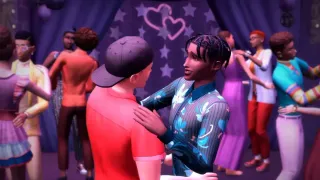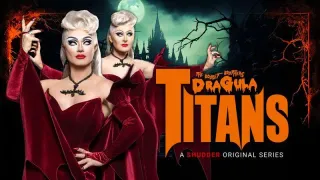May 21, 2015
Return to the Rainbow Forest
Kilian Melloy READ TIME: 4 MIN.
A spinner of tales, a visual novelist, a dream weaver, John Bankston is a San Francisco-based, gay African-American artist who, like the characters in his adventures, prefers not to be pigeonholed by race or sexual orientation.
His work often bends pop-culture icons - pirates, cowboys, magicians - that tend to be white and straight, opening the door to fantasy and imagination, realms the artist believes are largely closed off for African-Americans. His figures are black men who have departed a place that has stymied and labeled them for another where they can determine their identity and destiny through performance dress or costumes. "The Explorer," a new show of his whimsical paintings and drawings at Rena Bransten Projects, continues the ongoing saga of the Rainbow Forest, a land in which a man - perhaps Bankston's alter ego - can become the avatar of his dreams.
In the story's latest chapters, mechanical birds accompany him on his journey, he encounters strange diminutive men in animal masks who initially welcome him before taking him captive, and a robot creature called an Abstracticator, inspired by Bankston's visit to an abandoned blast furnace in the Deep South, may or may not hold the key to his emancipation. Though his work is playful with the hues and childlike simplicity of a coloring book, and a gentle humor that's disarming, the subtext hints at shifting racial and sexual identities. (May 21-July 3)
"You Are You," an exhibition of color inkjet prints, documents an annual weekend summer camp for gender-nonconforming children and their families. The camp is a non-judgmental, free-expression zone for kids - mostly boys - exploring their evolving sense of gender away from ostracizing cliques, bullying and the pressure to conform. The show, on view at RayKo Photo Center, grew out of the experience of photographer Lindsay Morris, who attended the camp with someone close to her in 2007. Her images, shot with a medium-format camera and published with some trepidation on the part of both parents and children in a 2012 New York Times Magazine photo essay, now comprise a book that was released last week. What the photographs convey in living color is that kids are kids, whether dressing up in a butterfly costume for a play or participating in talent and fashion shows, doing handstands, hamming it up for the camera or just hanging out.
Viewers, though, may feel a pang, understanding that these particular children may face challenges from a world that can be cruel when it comes to those who proclaim their difference and don't fit into society's proscribed notions of male and female. Morris hopes to fund a touring multimedia project showcasing this dimension of LGBT youth, and perhaps follow the same subjects as they move into adulthood. (Through June 19.)
"As Is Is," a title that sounds like it owes something to Clintonian parsing, actually refers to the name of a short by Saul Levine, one of seven films on a program that includes pieces on hustlers, the trauma of a disfiguring accident, rhythm & blues titan Big Joe Turner, and a brief profile of the late artist Anne Truitt, from gifted New York filmmaker Jem Cohen, who directed the memorable Museum Hours. In addition to films, the show at Altman Siegel features works in a range of media by a dozen artists who approach portraiture in their own idiosyncratic way. Lynette Yiadom-Boakye's oil painting "Butter and Sugar, Sugar and Butter" (2012), for instance, is a shadowy portrait of a woman who may well be a figment of the artist's imagination, while George Condo's cartoon cheesecake "Reclining Woman with Pearls" (2004) offers up a Picasso-esque tits-on-the-table Vargas girl. (Through June 27.)
Who can resist bizarre contraptions, hubris, and technology gone awry? That crackerjack combination, along with headless robotic mannequins in wrinkled, unwashed clothes, kneeling or standing on platforms and hooked up to the kind of apparatus one might find in a mad scientist's laboratory, form the essence of Kal Spelletich's Intention Machines, a slightly freaky yet fascinating interactive exhibition at Catharine Clark Gallery.
An inventor, musician, Zen philosopher, activist, and founder of an interactive machine-art performance collective, Spelletich combines art and mysticism with science and high tech for a new body of work that veers away from the mechanized fiery pyrotechnics he's known for, and toward the spiritual. By touching a sensor, visitors can operate the robots, which twirl, change positions and pray. Evidently, they respond to proximity, force, background noise and the alcohol content of your breath, among other triggers, but fortunately, they cannot read your mind or retain memories - at least, not yet. In the oncoming era of driverless cars, the rise of machines and Artificial Intelligence - phenomena that are worrisome even to Tesla's Elon "Musk" - a little paranoia might be a good thing. (Through May 30.)






